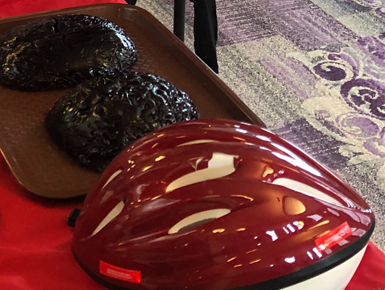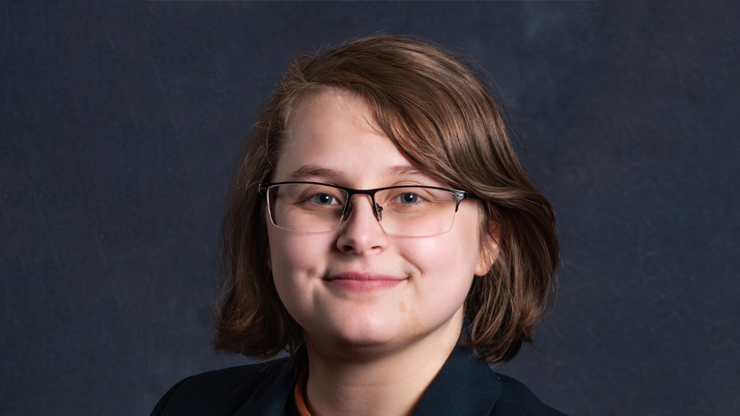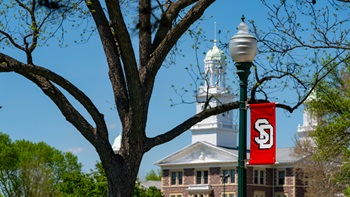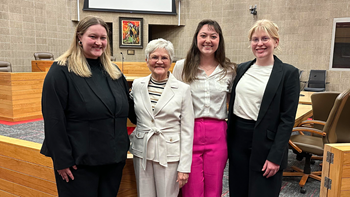Researcher Jamie Scholl Uses Gelatin Brains to Demonstrate Helmet Safety

“Around 85% of fatalities from bike-related accidents could be prevented by helmet use, and less than half of children 14 and younger wear helmets,” said Scholl, a research associate and outreach coordinator for the Center for Brain & Behavior Research (CBBRe) at USD. “We want to help kids and parents understand that it really is important and that, even if injury isn’t completely prevented, the trauma is usually far less severe when wearing a helmet.”
Scholl began her research on brain safety by investigating how stress and mild brain injuries could lead to more severe outcomes through increased inflammation in animal models. She then transitioned to a human model, focusing on finding markers for better diagnosing and predicting traumatic brain injury and post-traumatic stress disorder (PTSD).
Scholl’s goal is to improve diagnosis and treatment of traumatic brain injury and PTSD, especially when PTSD develops after physical trauma, which can make diagnosis and care more challenging.
“PTSD and traumatic brain injury are fairly common issues, especially in South Dakota,” said Scholl. “Any time you can bring your research topic to the public and get people talking about it helps bridge the gaps between the scientific community and the public, and hopefully helps remove the stigma that can still exist with trauma and PTSD so people feel more comfortable with seeking help.”
One way Scholl brings her research to the public is through community outreach events with K-12 students. Alongside CBBRe Director Lee Baugh, Ph.D., and students in the center's graduate student organization, Scholl creates human-sized gelatin brain models to show how delicate human brains really are. These demonstrations highlight the importance of brain safety for younger kids in a way that’s both engaging and educational.

Scholl first introduced the gelatin model demonstrations at a summer safety education presentation for kindergarten students at Austin Elementary School in Vermillion. In addition, Scholl has done demonstrations for the annual Spooky Science event at the Washington Pavilion, the South Dakota Discovery Center, and the Women in Science STEM Workshop, all in Sioux Falls.
In October, Scholl received a $1,000 South Dakota Biotech K-12 Outreach Grant to further her outreach activities for students in South Dakota’s K-12 schools. This grant has allowed Scholl to purchase additional supplies and increase the number of events she could host.
This spring, Scholls’ team will present their gelatin demonstrations to more K-12 students in both Vermillion and Sioux Falls. They will also do a demonstration for high school students who are interested in possible health careers.
Through her research and demonstrations, Scholl emphasizes the importance of wearing a helmet in protecting the brain from trauma.
“Always wear a helmet and make sure that it fits properly,” said Scholl. “If you make longer commutes or ride an E-bike, you may need to check the ratings and make sure the helmet is appropriate for higher-speed impacts.
“The added protection really does make a difference in the event of an accident,” Scholl explained.



